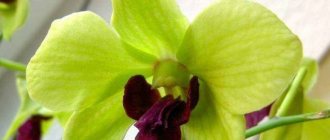- August 21, 2018
- garden plants
- Malysheva Irina
Park rose is a beautiful plant that successfully combines its lush flowering with the vitality of wild species. The bushes are strong, in good health, relatively tall - usually reaching one and a half meters. Flowering begins in early summer and lasts for more than a month.
It can be grown not only by experienced flower growers, but also by beginners who have recently just learned what it is - a park rose. These plants have increased winter hardiness. Despite the fact that their homeland is subtropics. Even in the middle latitudes of Russia, such roses can withstand winter without shelter.
Decorative types
The group of park roses includes all species of decorative rose hips. They bloom much earlier than cultivated varieties - from about the beginning of June. They have a pleasant smell. And in August they are decorated with orange fruits.
In Russia, rose hips are widely used in cities to decorate parks, squares, and areas near houses:
- Wrinkled rose (Rosa rugosa). The pyramid-shaped bushes are tall, reaching one and a half meters. The name of the plant justifies its wrinkled, shiny foliage. Dark pink flowers, up to ten centimeters in diameter, smell fragrant. This enjoyment begins early in June and continues throughout the month.
- White rose (Rosaalba). Gorgeous spreading bushes about two meters high are visible from afar. At the end of May, they are covered with countless buds, which open into flowers six centimeters in diameter, collected in clusters into loose inflorescences. The subtle scent of roses is carried far from the plant by the warm wind.
- Prickly rose (Rosa spinosissima). A very unpretentious plant. The height of the bush can be from seventy centimeters to two meters.
Its flowers are not double, milky white, with bright yellow stamens. Pleasant aroma. Blooms in May. The stems are covered with many small thorns.
Thanks to the painstaking work of Canadian and English breeders, varieties of park roses have been developed that have large double flowers. The new plants are not sissy at all. They steadfastly resist most diseases and withstand the difficult Russian winters quite confidently.
Characteristics of crop species and varieties
How to cover roses for the winter
Park roses are divided into numerous types. Names and descriptions of the most common:
Floribunda
The height of these roses is from 30 to 100 cm, the diameter of the buds is from 4 to 10 cm. They bloom in mid-summer and have numerous colors. The most popular varieties:
- park rose Remy Martin,
- Fluorescent.
Rose hips
Rose hip
Their height is up to 3 m. They require shelter from frost for the winter. Among flower growers the following are valued:
- rose Louise Bugnet - white rose,
- Märchenland.
Musk hybrids
These varieties reach a height of up to 4 m and have large spherical buds. The diameter of the flowers is 6-8 cm. The most popular musk hybrids are:
- Elmshorn rose, also known as Elmshorn rose,
- Lichterlo.
Historical roses (old varieties)
Lichterlo
Most often their height is 90-140 cm. These flowers have wide spreading bushes. Roses can grow in the shade and have a strong aroma. The most popular variety is the pink rose Jacques Cartier.
Shrubs
This group appeared 50 years ago. All scrubs are considered shrub types. They can be tall, low, creeping, or climbing. They are not afraid of severe frosts. The flowering of such roses is lush and abundant, as well as long-lasting or repeated (in remontant species). The aroma is very expressive. Unpretentious varieties:
- rose Hope for Humanity,
- Rose Moden Fireglow,
- Rose Ghislaine de Feligonde,
- Rose John Franklin
- Rose Zh.P. Connell (JP Connell),
- Rosa Agranta.
Rosa Agranta.
Explorer Series
These are high quality Canadian roses. It takes root well in Russia. Resistant to diseases and pests. They have a long flowering period, and most varieties are remontant (they bloom 2 times per season). They smell weak. Colors from light to dark red. Disadvantage: poor resistance to prolonged precipitation. Most often, gardeners buy Cuthbert Grant roses for planting, also known as Cuthbert Grant roses.
Shrub roses
Their height is from 25 cm to 3 m. Shoots on perennial bushes can be annual. There are varieties without thorns. The flower size reaches up to 80 cm in diameter. This group has a variety of colors. The shape of the bud is spherical, cone-shaped, flat, peony-shaped. The shape of the bush can be spreading or in the form of a pyramid. The most popular variety from this group is the Eiffelsauber park rose.
Beauties from Canada
These park roses grow comfortably in cool climates. They bloom well in the capricious Russian summer. In the south of the country, Canadians are too hot, they are languishing from lack of water. Roses overwinter without shelter, withstanding even cold temperatures of about thirty-five degrees for a short time.
Some of our most common varieties:
- John Davis. Large light flowers have a classic shape and look very elegant. The bush is two and a half meters high and pleases with its beauty all summer until the cold weather. It is impossible not to notice - its subtle aroma will invite you to admire the pink park roses.
- John Franklin. It grows into a neat bush a little more than a meter high. The roses are reddish, similar to double carnations, collected in small inflorescences. A very pleasant light smell is the hallmark of the variety. Blooms all summer long.
- Morden Sunrise. Large flowers, approximately eight centimeters in diameter, are painted a pleasant orange color with a pink blush. The bush grows no higher than one meter, but despite its growth, it is very resistant to many diseases.
general description
Park rose is a well-known and widespread garden crop, essentially a cultivated rose hip, its hybrids, varieties, subspecies and species. Most of them are distinguished by their terry nature - up to 150 petals grow on one bud. The average height of shrubs is usually from one and a half meters, but there are taller (up to 2.5 m) and low (up to 1 m) specimens. The color of the petals can be almost any, from white to deep purple. The first flowers appear at the end of May and stay on the branches for a month and a half. If you choose re-blooming specimens (and there are many of them), you can enjoy their beauty and aroma all summer long. But even those that bloom once after the petals fall do not lose their attractiveness: lush green bushes with fruits look quite impressive.
There are several options for classifying garden crops:
- once or repeatedly flowering;
- in terms of frost resistance: needing bending and shelter, cold-resistant Canadian (overwinter without shelter in the middle zone), hybrids with increased frost resistance - rugoses;
- with double and simple buds;
- according to the shape of the bush: upright, bushy, standard and climbing (ramblers).
Advantages
What is so unusual about park roses, why are they so popular? The answer is simple: in addition to beauty and varietal diversity, this crop has a number of advantages:
- bloom earlier than hybrid tea varieties;
- are resistant to low temperatures, which is important in climate zones with severe winter frosts;
- do not require complex care;
- resistant to many pests and diseases;
- undemanding to soil.
Usage
In landscape design, garden culture has found the widest application, this was facilitated by the variety of bred hybrids. They are used both as independent plants and in compositions. Excellent as a hedge, they look impressive as a decoration for gazebos, arches, or at the entrance to the house. Low-growing representatives have found their place in flower beds and look good when planted in borders.
Varietal diversity
Park roses have many varieties, hybrids, and species. Every amateur gardener will be able to choose a plant with the desired characteristics (flowering time, frost resistance, aroma, color). It is worth getting acquainted with the names of the most popular representatives of this garden crop.
Canadian
Canadian park roses:
- John Franklin. With bright red semi-double buds, collected in brushes of 25 - 30 pieces, the aroma is light.
- JP Condell. With lemon-yellow petals, subsequently changing color to white. Bush height up to 1.5 m.
- Hope For Humanity. The buds are wine or dark burgundy in color, the bush grows up to 2.2 meters.
- Martin Frobisher. Milky pink double inflorescences of 10-15 pieces abundantly cover the lushly growing shrub.
- Remy Martin. With classic light apricot flowers of 25-30 petals. Reaches one and a half meters in height.
- Black magic. A flower with velvety black and burgundy petals, in appearance it resembles a hybrid tea.
- Märchenland. Pastel apricot classic buds are collected in clusters of 40 pieces and are formed all summer until the first frost.
John Franklin
JP Condell
Hope For Humanity
Martin Frobisher
Remy Martin
Black magic
Marchenland
Louise Bagnet
Any of these Canadian park roses (like hundreds of other representatives of this group) will decorate your garden plot.
English
English park roses are no less attractive and compete worthy with Canadian ones:
- Cardinal Richelieu. The shrub is covered with numerous purple, densely double flowers.
- Winchester Cathedral. It is distinguished by lush flowering even in autumn; beautiful, densely double petals are soft white.
- Golden Celebration. With very large (up to 16 cm in diameter) dense yellow buds.
- Skepte d'ile. The petals, pale pink on the outside and bright pink on the inside, are collected in densely double cup-shaped buds.
Skepte d'ile
Cardinal Richelieu
Winchester Cathedral
Golden Celebration
Different types
In addition to Canadian and English hybrids, there are many park roses bred in different countries. Species worthy of the attention of gardeners:
- Daurskaya;
- Damascus;
- Musk;
- Bourbon;
- Mokhovaya;
- French;
- Chinese;
- Multi-flowered;
- Centipedal.
Daurskaya
Damascus
musky
Bourbon
Mokhovaya
French
Chinese
Multiflora
Centipelas
Each species has subspecies and hybrids. All of them are worthy representatives of this popular garden culture. If you provide them with the necessary care, you can enjoy their aroma and beauty for many years.
English ladies
These park roses cannot be confused with others. Sturdy plants, tall and spreading, completely covered with large, heavy flowers. Each variety of unusual roses can be identified by its individual scent. The shape of the flowers repeats the pictures from ancient engravings and gives the plants a sophisticated charm. Several descriptions of park roses from England:
- Abraham Derby. The flowers are densely double and large in size. They have a lovely antique bowl shape. Near the bushes there is a light aroma of fruit. The flowers are apricot with pink edges, but show their color in cool weather. In the hot sun, the delicate colors fade. This variety grows well up to two meters, is not affected by diseases, and has two clearly defined waves of flowering.
- Benjamin Britten. The cup-shaped large flowers carry distinct wine notes in their scent. The color is very rich, red with an orange tint. Combined with its small (up to a meter) growth, such brightness makes the plant a wonderful accent in the garden. Like all “English” people, it is practically not susceptible to disease and is unpretentious.
- William Shakespeare - 2000. An improved replacement for the famous variety of red roses, William Shakespeare. It is characterized by amazing resistance to weather surprises. Huge double velvet-red flowers are also collected in large brushes. When they bloom, they look like deep bowls. Each flower stays on the bush for more than two weeks, and later opens to a flat state. Roses emit their characteristic scent. The bush is erect, quickly forms and blooms.
- Graham Thomas. Among the English representatives, the most popular is the yellow park rose. Excellent variety.
Such a rich color is difficult to find even among hybrid tea roses. Traditionally, cup-shaped flowers smell like expensive teas. The rose branches beautifully, forming a beautiful bush. Blooms continuously all summer long.
How to choose a site for planting
Before you start planting park roses, you need to choose the right place for this. A sunny area with good ventilation, but not too open, is more suitable for plants. But these roses can easily come to terms with partial shade.
You need to pay attention to the composition of the soil. Park varieties will grow well in soil that meets the following conditions:
- contains many nutrients;
- light and loose;
- soil acidity is close to neutral (pH 6-7).
Loam is most suitable for such conditions. If the garden has soils with different characteristics, the composition is adjusted by adding the missing elements.
All that remains is to choose a planting scheme and dig holes in accordance with it.
Description of the plant
Park roses are the most unpretentious and hardy representatives of the Pink family. This is a large group of flowers that includes decorative varieties of rose hips, as well as ancient varieties of roses - moss and centrifolium. All varieties are used for urban and garden landscaping. The bush responds well to pruning, so the planting can be given almost any shape.
Externally, it is a medium-sized shrub up to 1.5 m high. It is very branched, so when planting it is important to leave enough space between plants. The buds appear quite early, the flowering is abundant and long-lasting. Its color is very wide - from dark purple to orange and yellow. Double flowers consist of dozens of petals, making it look decorative and voluminous. The shrub has high frost resistance, but when grown in middle and northern latitudes, it is advisable to provide shelter for the winter.
Planting plan
It’s not difficult to create a spectacular flower garden yourself. A ceremonial rose garden and picturesque mixborders will become the pride of the garden if you take into account the rules of planning and think through the harmony of rose varieties with the surrounding plants.
As a component of a living composition, the rose is a wonderful universal plant. It works great as a solo plant, or can look good in combination with other plants. The most common types of flower beds, convenient for planting and caring for park roses:
- A flowering border is a classic form of a rose garden. Suitable for placing such tall and bulky varieties along the hedge. Plants are placed in a checkerboard pattern at a distance of 100-150 cm, filling the free spaces with other varieties and types of roses.
- Mixborder is a very popular flower garden. Flowering herbaceous, tree and shrub plants are planted on a fairly wide strip. It is necessary to take into account the growth rate and the growth area of plants. And also choose the flowering time of the plantings so that the mixborder always blooms. Large plants are placed in the background of the composition. The middle ones are placed closer to the center, and ground covers take place in front and between them. These can be either herbaceous perennials and annuals, or shrubs, even creeping woody plants.
How to properly plant park roses and care for them in the open ground
Climbing rose - planting and care in open ground in spring
In order to properly plant and grow a park rose for a beginner, you need to follow simple recommendations:
- Choosing the right landing site. The absence of strong sun and the presence of light shade are welcome.
- Creating favorable soil for planting. Humus, looseness, and loam ensure dense and abundant flowering in late spring and throughout the summer.
- Applying the correct fertilizer in case of poor soil (rotted compost with sand in equal proportions).
- Before planting, the roots of the seedling are not kept in water, as excessive dampness can cause various diseases, such as powdery mildew.
Important! After planting roses, it is necessary to moisten the seedlings daily with a small amount of warm water.
Preparation for planting a seedling in open ground:
- The roots are cut to 1–2 cm.
- Remove dried, damaged shoots.
- No more than 4 buds are left on the shoot.
- Before planting, the seedlings are slightly moistened with water.
Note! The procedure is best performed in early spring or warm autumn, before the onset of cold weather.
Planting is carried out in previously prepared holes with fertilizer. The roots are placed in them and covered with earth. Then the first watering is carried out.
Step-by-step execution algorithm:
- preparing the hole (diameter – 40 cm, depth – 70 cm);
- adding drainage (expanded clay, pebbles, clay, broken brick) and fertile soil;
- seedlings are placed in prepared holes;
- cover the top with earth and water with warm water (about 15 l);
- seedlings are covered with peat at least 20 cm thick.
The distance between planted crops should be at least 1 m, since when shrubs grow, they can harm each other.
It is better to plant the crop in early spring or warm autumn
Responsible moment
What you need to pay attention to when choosing rose seedlings from a seller for your garden:
- On the label. High-quality seedlings are always provided with a tag. It contains information about the variety: which group of roses it belongs to, what conditions it prefers, the name of the manufacturer. The ADR mark is assigned to varieties that are especially hardy in unfavorable conditions and resistant to diseases.
- On the number of shoots. Top quality seedlings have three freely spaced shoots. Two strong shoots are also not bad. But the price category should already be lower.
- On stems and buds. They should be a nice green color. The bark of the shoots is intact, without damage or foulbrood. The buds are large and well developed.
- On the roots. Choose whole ones, not broken ones. If the root system is closed, the substrate should be moist and not overdried.
Finally, you can start planting roses. If the seedlings have an open root system, then before planting they must be immersed in water for several hours. Carefully trim the roots with pruning shears, trying not to damage the white thread-like shoots. The stems of the seedling need to be trimmed, leaving 2-4 buds.
The holes for the roses are made in such a size that the roots are well spread out, and the root collar is buried into the ground by about eight centimeters. If a seedling is planted with a clod of earth, the hole should be about ten centimeters wider and deeper than it.
The young bush is carefully covered with soil, holding it at the desired level. Having compacted the soil, the plant is hilled up another fifteen centimeters, and a groove is made around it for water. Water the planting well.
Care
Rose bushes should be cared for regularly.
Wintering in open ground
In preparation for cold weather, it is necessary to remove buds and leaves from the plant. Further, everything depends on climatic conditions and frost resistance. If the variety does not need additional shelter, then it is enough to mulch the ground. If shelter is required, then it is necessary to bend the branches to the ground and secure them with staples.
Advice: if the branches are strong and do not bend well, you need to dig them up on one side and bend them down along with the root.
As a covering material, you can use spruce branches or ready-made woven breathable materials. To avoid freezing of the root collar, you should hill up to a height of at least 20 cm. At the beginning of spring (after warming, before the sap begins to flow), the shelter is dismantled and the branches are straightened. In this case, branches that are 4-5 years old are cut down to the root, and the cut points are treated with garden varnish. For more luxuriant growth, the rest can be trimmed (to a maximum of 2 buds).
Features of care
For quality shrub care you will need:
- Watering. The soil should be kept slightly moist. Depending on the climate, watering should be done 2-3 times a week, abundantly. Reduce watering by the end of summer, and stop it completely in the fall.
- Feeding. It should be carried out starting from the second year after planting, once or twice a month. It is better to use special fertilizers for these flowers, foliar ones are possible. Or apply organic fertilizers.
- Trimming. Starts from the second year. To maintain the shape, formative pruning is carried out, and lignified branches are always left, it is on them that flowers are formed. Anti-aging pruning is carried out when the bush grows excessively. It is done in the fall, all old shoots and most of the small non-flowering growth are removed. It is advisable to immediately treat the cut areas with garden varnish.
- Loosening. The soil around the bush is loosened regularly throughout the summer. This ensures additional air exchange and prevents moisture stagnation.
- Increased growth. For more luxuriant flowering, the formation of side shoots is necessary. To enhance their development, in May and June the stems can be treated with growth stimulants.
Please note: in rose bushes, flowering begins only on the shoots of the second year of life. But there are remontant varieties; their buds also appear on young shoots.
The rules of care are quite simple. If you follow them, you can achieve excellent results: the plant will actively grow and develop.
Park roses: care and cultivation
When purchasing these beautiful plants, you don’t need to think that the troubles will end with planting. While the bushes are still very small, they need special care. It is the efforts of the grower that will help the roses grow beautiful, resistant to pests and diseases.
The root system and shoots of plants are formed within three years. All this time you will have to loosen the soil, carefully water it, patiently apply fertilizer, and, if necessary, prune.
Water is especially important in spring and summer. Plants are actively growing and blooming. In the photo, the park rose feels great.
With the onset of September, watering is not needed; the plant begins to prepare for winter.
After planting the bushes in the spring, in dry weather, they are watered once every three days. Then it is enough to do this weekly. You can immediately see if the rose does not have enough water. The shoots stop growing, the flowers become smaller, the foliage withers and crumbles. The norm for watering an adult bush is a bucket of water at a time.
After a day, you can begin to loosen the soil. This will improve its breathability. The procedure is carried out carefully, avoiding damage to the roots and removing weeds.
Mulching of the tree trunk circle is carried out using organic matter, approximately five centimeters thick. This gardening technique will help keep the soil moist longer, prevent the roots from overheating in the heat, and reduce the number of weeds. Humus, peat, bark, chopped straw, compost - all this can serve as mulch and, over time, provide the rose with additional nutrition.
As a rule, this procedure is carried out in May. In autumn, you can mulch in October, before the soil freezes. But first the weeds are pulled out. From time to time everything is repeated again.
In the spring, at the beginning of the season, park roses are fed with nitrogen fertilizers containing microelements: magnesium, boron, iron. Special fertilizers are diluted in water and applied after watering. A second soil enrichment will be required in August or September. Eliminate nitrogen, increase the content of potassium and phosphorus. In October, it is enough to put rotted compost as mulch. Next year the plants will get a good start.
What is the difference between park roses and bush roses?
There are few differences, here are some of them:
- It is believed that a park rose is easier to care for than a bush rose; pruning and shaping are done less often.
- High resistance to low temperatures.
- They multiply quickly and the flowers attract insects that pollinate the plant.
- Disease resistance, bush roses are subject to many diseases and attacks from pests: caterpillars, beetles, sawflies.
- Mature bushes have long shoots, while the crown is very flexible.
Flower growers and gardeners prefer to grow park roses, not only because of their beautiful appearance, but also because their roots do not need to be covered from frost; bush varieties need to be covered for the winter and hilled up.
Reproduction
It’s easy to grow your favorite variety in the garden in the right quantity. Every gardener has a photo with the names of park roses that have sunk into their soul. There are several methods of reproduction:
- By layering. At the beginning of the growing season, the stem is bent to the ground and, secured there, dug in. Young plants emerge from the buds, which are separated and planted in a flower bed next year.
- Overgrowth. In the spring, one-year-old offspring are separated from the mother bush, the stems are shortened by one third and replanted.
- By division. Overgrown young bushes are cut into small parts - divisions - with pruning shears. This procedure can be carried out in spring or early autumn.
- By cuttings. The most labor-intensive method, but it allows you to get a lot of planting material at once. Cuttings are taken both green (in spring) and woody (in autumn). All shoots are planted for rooting only in the spring.
Park roses that do not require shelter for the winter
Frost-resistant roses for Siberia
There is no need to worry about the safety of the bush in frost; park roses winter well, even if they are not covered. But, even if the bush freezes in winter, new young shoots will soon sprout at the base.
There are 3 types of roses that can withstand winter cold:
- Moderately winter-hardy. They can freeze in places where there is no snow cover. It is recommended to bend the bushes to the ground. Among these types of roses are Remy Martin and Elmshorn.
- Winter-hardy. They tolerate winter quite well in an upright position, but can freeze out. These include the Jacques Cartier and Cuthbert Grant varieties.
- Absolutely winter-hardy. The hardiest roses that do not freeze even at extremely low temperatures. We are talking about the rose varieties Cuthbert Grant, Hope for Humanity, Morden Fireglow and Louise Bagnet.
Hope for Humanity
Pests and diseases
Although park roses have good health (especially modern varieties), it is still necessary to be fully prepared in unfavorable circumstances.
In wet years, some plant species can be affected by spheroteca. It is known to gardeners as powdery mildew. A gray coating appears at the bottom of the leaf. The spores quickly spread throughout the plant, and the disease spreads to neighboring bushes. It is dangerous for roses and can lead to death. To prevent this, in early spring the plants are sprayed with the following preparations: “Topaz”, “HOM”, “Skor”.
Among the pests that can visit the rose are the crimson weevil, leaf roller, garden beetle, and spider mite. They do not attack every year, and they will not be able to harm the plant so much that it will disappear completely. But when there are a lot of them, they spoil the decorativeness of the bush and depress it. In the photo there is a park rose and a pest - the garden beetle.
The larvae feed on roots and buds, and the adults gnaw out everything: buds, leaves, flowers. Therefore, beetles must be collected and destroyed. And the plants are sprayed with “Aktellik”, “Vermitek” or “Fitoverm”.
Wintering
Despite the fact that park roses are frost-resistant, preparation for winter is an important part of care. It is especially important to carry it out for young plants under 3 years of age. To do this, after flowering, remove all buds and leaves, and then hill up the soil along the entire diameter to a depth of 30 cm.
It is necessary to mulch the soil, which will protect the roots from hypothermia. The stems are tied firmly to a support and then wrapped in craft paper or cotton cloth. When growing in the north, it is advisable to additionally use spruce branches or agrofibre.
Reliable prevention
Compliance with agricultural practices and careful attention to park roses will help prevent the appearance of diseases and pests. Experienced flower growers advise:
- water only at the roots, avoiding getting the leaves and flowers wet;
- feed roses in time according to the season;
- carefully periodically loosen the soil under the plants;
- pull out weeds;
- in the fall, avoid watering altogether;
- In late autumn, trim unripe young shoots and remove leaves.
By choosing a well-lit place in your dacha or garden plot, preparing the right soil and providing proper care, it is not at all difficult to grow such wonderful park roses as in the photo.











